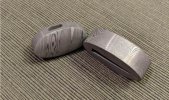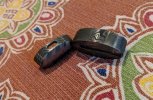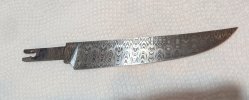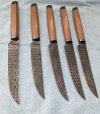VorpelSword
Gold Member
- Joined
- Dec 27, 2007
- Messages
- 1,688
I have seen a few forging videos where one of the final finishing steps is to soak the blade in strong coffee to darken it.
Whiskey Tango . . .how does coffee react with the steel? I mean I understand etching and bluing, what is going on with coffee?
Does this treatment last or can it fade if left in a display case (or my sock drawer)?
Is there any adverse effect on the steel over a extended period of time?
This treatment is not traditional to knife making, only coming out in the last ten years or so I think. I wonder why it never occurred to anyone to treat steel this way before in the several thousand (hundred?) years we have had both fine steel and strong coffee.
I am just trying to understand the treatment, not knock the practice.
Whiskey Tango . . .how does coffee react with the steel? I mean I understand etching and bluing, what is going on with coffee?
Does this treatment last or can it fade if left in a display case (or my sock drawer)?
Is there any adverse effect on the steel over a extended period of time?
This treatment is not traditional to knife making, only coming out in the last ten years or so I think. I wonder why it never occurred to anyone to treat steel this way before in the several thousand (hundred?) years we have had both fine steel and strong coffee.
I am just trying to understand the treatment, not knock the practice.




